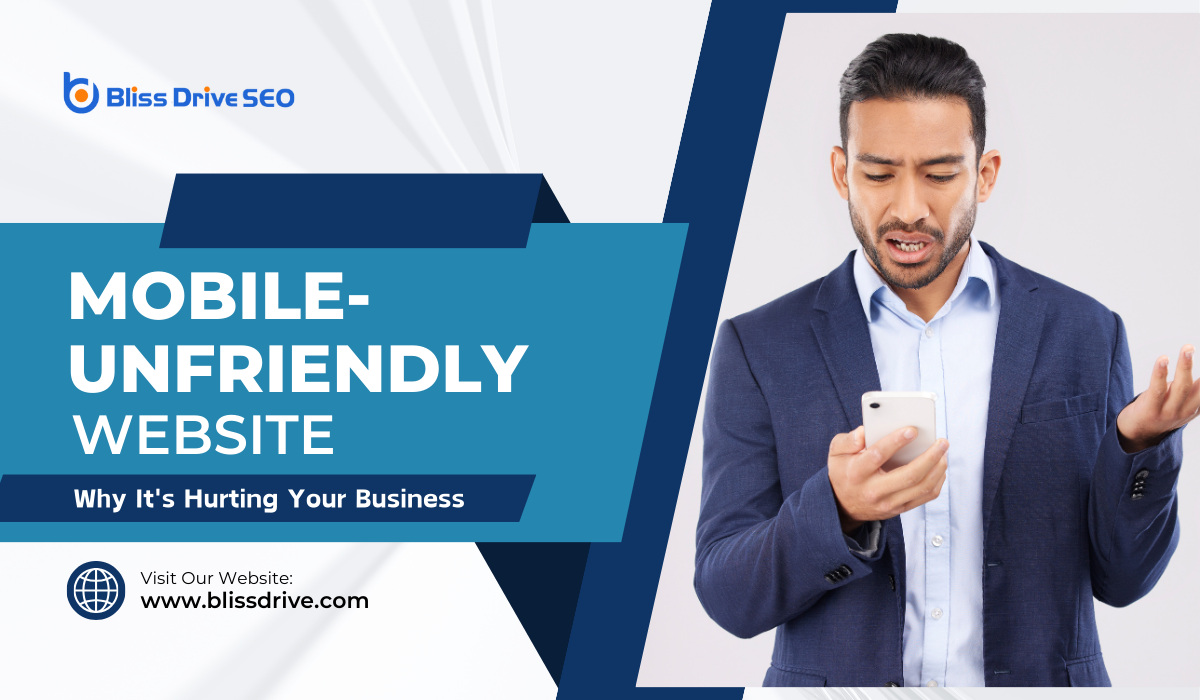Digital Marketing Services
Learn More About Us

A mobile-friendly website means that it looks good and functions well on mobile and tablet devices. It should also adapt to different screen sizes and orientations.
After all, 95.85% of users access the internet via mobile phones. This makes it critical to ensure mobile-friendliness on your website.
Neglecting this aspect can hurt your business in several ways, including:
In this article, let’s discuss these issues in detail. We will also explore practical steps to ensure your website caters effectively to the mobile user.
Having a mobile-unfriendly website can impact various aspects of your business and online presence.
Here’s how a lack of mobile optimizationDesigning and formatting web content to ensure it performs well on mobile devices. may be hurting you:
Mobile users will leave websites that aren't optimized for their devices. If your site is hard to navigate, loads slowly, or displays poorly on mobile screens, visitors will likely abandon it. This will increase your bounce rates.
Search engines, like Google, focus on mobile-friendliness as a ranking factor. If your site isn't optimized for mobile, it's likely to appear lower in search results. This will reduce your online visibility and organic trafficVisitors who come to a website through unpaid search engine results..
A mobile-unfriendly site can frustrate potential customers, leading to fewer conversions. People are less likely to complete a purchase or sign up if the process isn't smooth and easy on their mobile devices.
In today's tech-savvy world, a mobile-unfriendly website can harm your brand’s image. It suggests that your business is outdated or doesn't care about user experience. A poor brand perception can drive customers to competitors.
Mobile users often look for local services or stores. If your site isn’t mobile-friendly, you miss out on local search opportunities and potential walk-in customers who find businesses via their smartphones.

Checking your website’s mobile-friendliness is essential to ensure it performs well on smartphones and tablets.
You can start by using Google’s Mobile-Friendly TestA tool that evaluates how well a website performs on mobile devices. tool. Enter your website’s URL, and the tool will analyze it. It will give you a report on whether your site is mobile-friendly and highlight any issues that need attention.
Additionally, you can perform manual checks by accessing your website on various mobile devices. Pay attention to loading times, ease of navigation, and how well the content appears on screen.
This hands-on approach helps you understand the user experience from a mobile visitor's perspective. It will provide insights that automated tools might miss.
Optimizing your website for mobile is no longer an option. It's a fundamental necessity in today's digital marketplace. Embracing mobile-friendliness enhances user experience, strengthens your brand, and boosts your online presence.
Make these critical updates today to ensure your website is accessible and appealing to mobile users everywhere.
Ready to enhance your website's mobile responsiveness? Contact Bliss Drive today for expert web design services that cater to your business needs.
